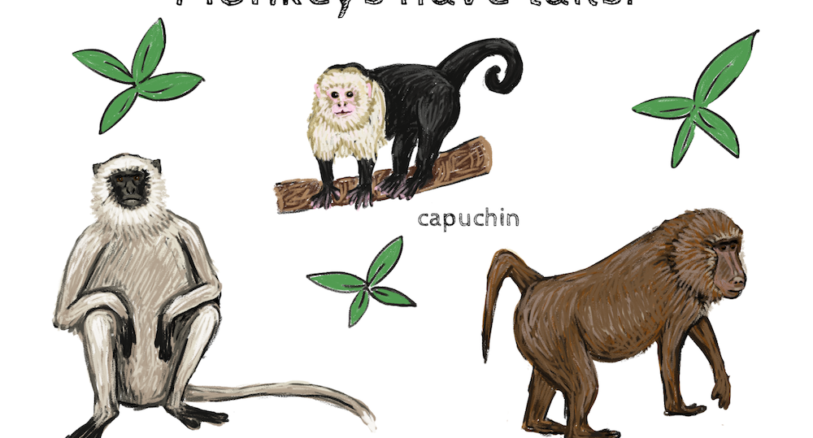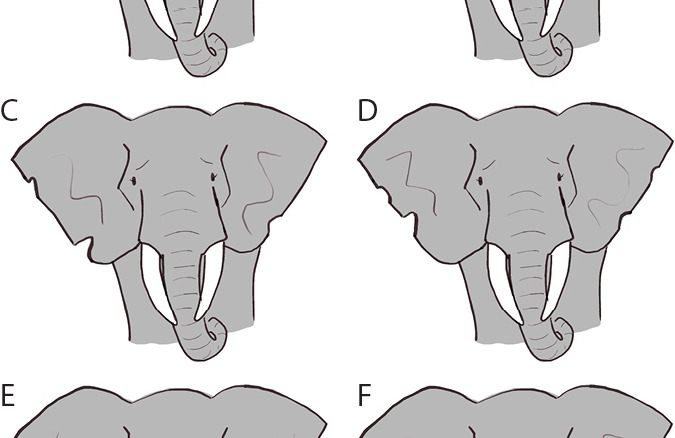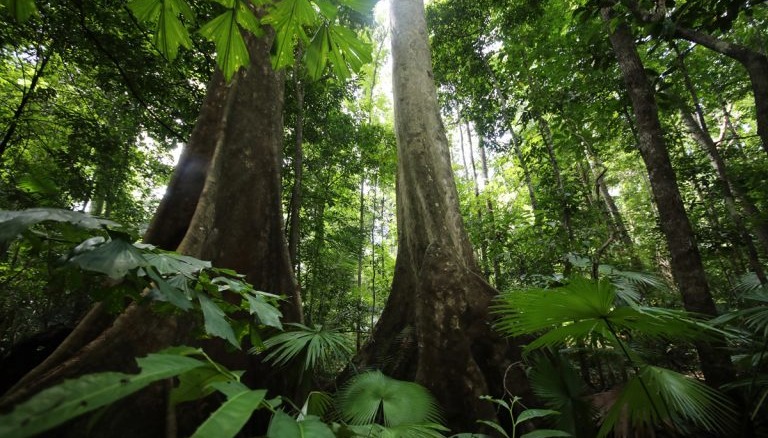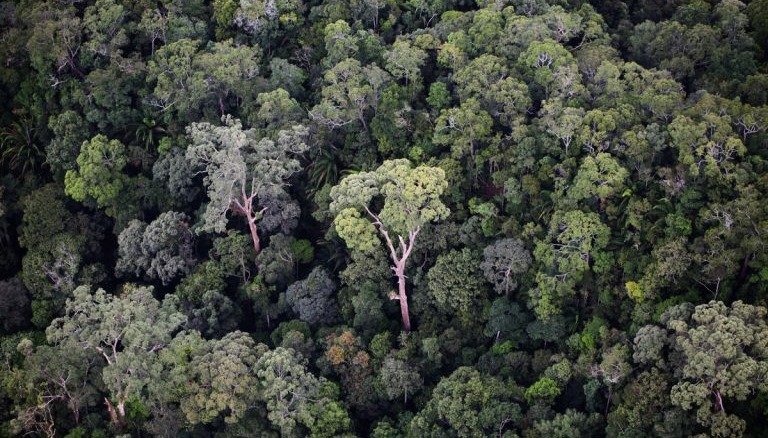By Lisa Algee
This article is part of a four-part series on biodiversity consisting of the following articles:
- Biodiversity
- Deforestation
- Palm Oil (this article)
- Conservation
Each has been taken from the Mongabay main site and adapted to meet 3rd grade science standards and 2nd grade reading standards. Ideally, they are to be read in the above order.
Versions of these articles with 3rd grade reading standards are available here:
What is palm oil?
Have you ever heard of palm oil? Palm oil is used in food, shampoo, toothpaste, makeup and other things. Palm oil can even be used in biofuels to run cars or buses.
Look at the label on the back of your cookies or cereal or soap. You may see the words Palm Oil or Palm Kernel Oil.
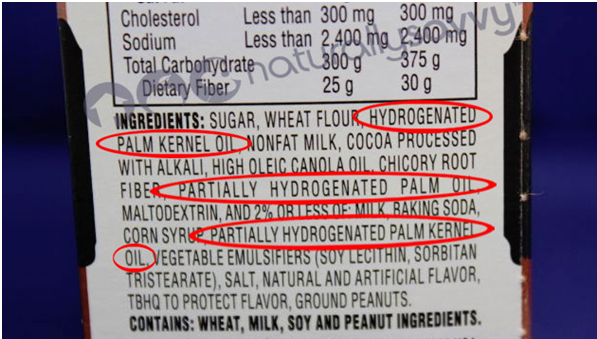
Where does it come from?
Palm oil comes from a tree called the oil palm tree. This tree grows in humid climates. Rainforests are hot, humid and get a lot of rain.
Rainforests have the perfect conditions for growing oil palm trees.
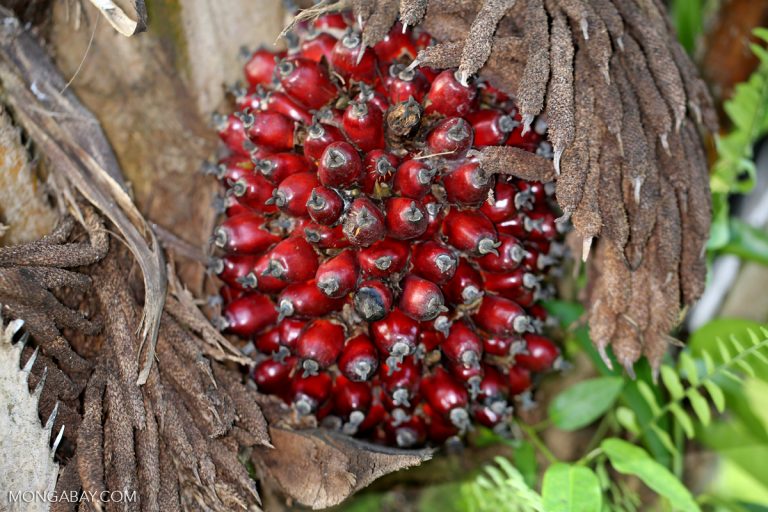
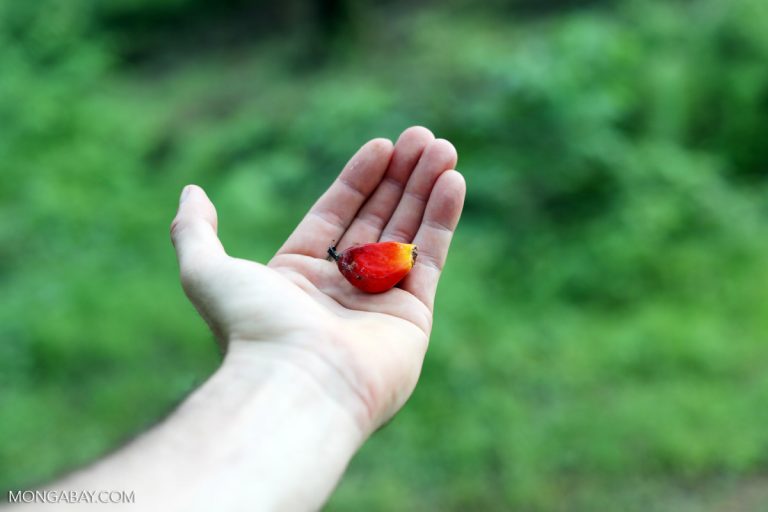
The trees grow a large red fruit called “red palm oil” or “oil palm fruit”. One tree can make many fruits. One acre of land (which is about the size of a football field) can produce 7 tons of oil. That’s enough to fill over 13,000 water bottles with palm oil.
Lots of oil comes from each tree. That means a farmer can make a lot of money from each tree.
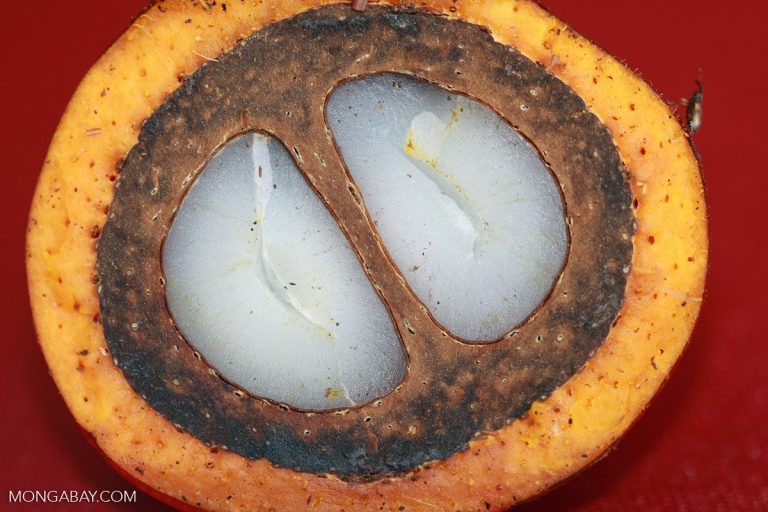
Why use palm oil?
Palm oil is used because it holds together well. It keeps chocolate from melting at regular room temperature. The same is true for margarine or cookies. It prevents the ingredients in toothpaste or shampoo from separating.
Many researchers tell us that eating vegetable oils is better for our health than eating animal fats. Oils come from vegetables or plants. Fats come from animals. Some of the animal fats we use are called butter or lard. More people want to use a product like oil.
Why do we care?
Palm oil is used in many products. It may be found in every room of our homes. It may be found in half of the foods we buy and eat. That is a lot of palm oil. The picture below is a rainforest.
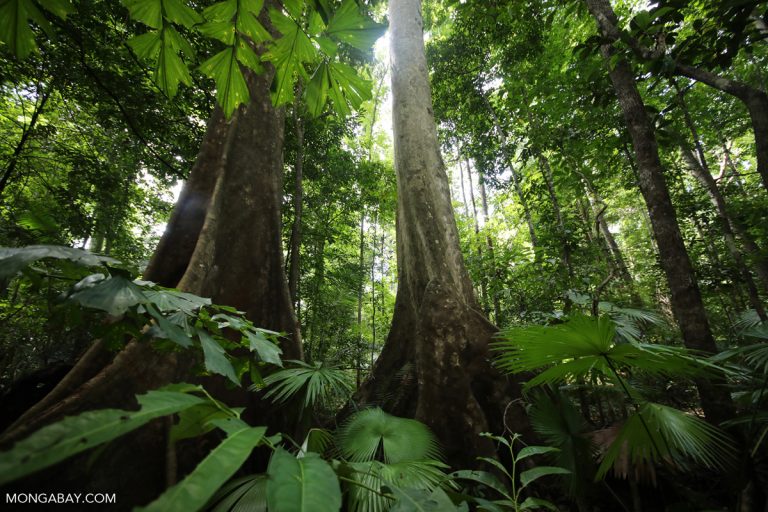
This used to be a rainforest. Now it is bare ground.

This used to be a rainforest. Now it is bare ground. Soon it will be a palm oil plantation. Nothing else will grow on this land when it is a palm oil plantation.
What do you think happened to the animals that used to live in the forest?
__________________________________________________________________________________________________________________________________________________________________
What do you think happened to the plants that used to grow in the forest?
__________________________________________________________________________________________________________________________________________________________________
GLOSSARY
biofuel (n.) a fuel made from living matter such as plants or agricultural waste.
climate (n.) the general weather conditions of an area or region including rain, sunshine, wind, temperature, air pressure and cloudiness.
frequently (adv.) often, many times, at short intervals.
humid (adj.) containing a high amount of water vapor, moist.
ingredient (n.) any one of the things mixed together to form a dish or other combination.
oil palm tree (n.) a tree from West Africa, which grows in tropical climates and produces fruit which can be turned into many things.
plantation (n.) a large farm, especially in a tropical or semitropical country, on which crops have been planted, frequently the work is done by workers who live on the plantation.
produce (v.) to make or manufacture.
rainforest (n.) usually a tropical forest with dense evergreen growth and high yearly rainfall.
researcher (n.) a person who verifies or discovers information, a person who carries out academic or scientific research.
room temperature (n.) a comfortable indoor air temperature, generally 70 degrees Fahrenheit or 21 degrees Celsius.
Reading Questions
1. Which sentence from the section, “Where does it come from?” explains how much oil can be made from oil palm trees?
- a) Palm oil comes from a tree called the oil palm tree.
- b) Lots of oil comes from each tree.
- c) One acre of land (which is about the size of a football field) can produce 7 tons of oil.
2. Which sentence is not a reason for using palm oil?
- a) Palm oil is used because it holds together well.
- b) It prevents the ingredients in toothpaste or shampoo from separating.
- c) Palm oil comes from a tree called the oil palm tree.
- d) Many researchers tell us that eating vegetable oils is better for our health than eating animal fats.
3. Which of the following options best explains the main idea of the entire article?
- a) Lots of palm oil comes from one tree.
- b) Vegetable oil is healthier than animal fat.
- c) Palm oil is a product grown on rainforest land and is being used in many things.
- d) Palm oil plantations can be grown anywhere in the world.
4. What do you think happens to animals when a rainforest is cut down for a plantation?
________________________________________________________________________________________________________________________________________________________________________________________________________________________
Banner image by lyzadanger – flickr.com
Modified from Rhett Butler’s article; and Pek Shibao’s article/ 26 March 2015
Credit: All content created by Lisa Algee. You can contact Lisa at algeelisa[at]gmail.com

